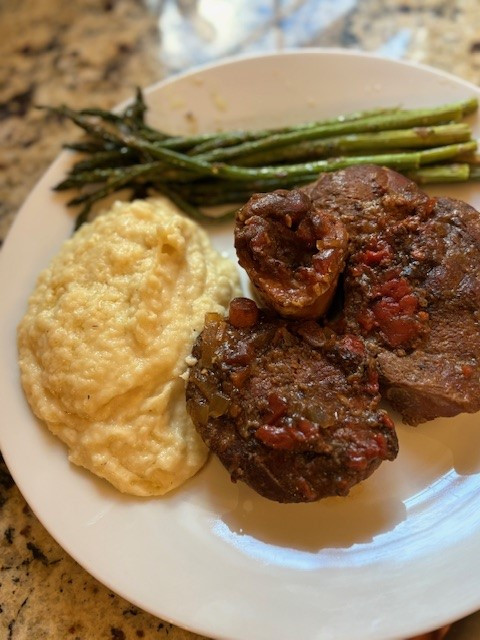Comfy & Cozy Twist on Beef Stew
posted on
January 24, 2023
I thought I would share a recipe we’ve made a few times now and it’s been fantastic every time.
We host Christmas Eve dinner at our house every year and this year I decided to add in this stew recipe for something a little different….and it was a huge hit! Everyone who tried it loved it!
This Cranberry Cider Braised Beef stew recipe originated from the Half-Baked Harvest blog….if you still haven’t checked out her stuff you really should, great food and drink recipes! Check out her original recipe here.
But of course, in typical style I’ve made a few adjustments to the original recipe to better suit our tastes. I put my version of the recipe below!
This is a great crockpot recipe so you can set it and forget it – and is sure to warm everyone up with the cold, wet weather we’re having!
Cranberry Cider Braised Beef Stew
3 pounds C&F Farms Stew Beef (you could also use a chuck or your other favorite roast cubed)
Salt and black pepper
2 tablespoons extra virgin olive oil
3 shallots, thinly sliced
6 carrots, chopped
2 cups apple cider
1 cup dry red wine
2 tablespoons balsamic vinegar
2 tablespoons tomato paste
1 tablespoon brown sugar
4 sprigs of fresh thyme
2 dried bay leaves
2 cups fresh cranberries (I only used about half this many, so adjust according to your personal taste)
2 cloves garlic, smashed
1-1/2 cups grits (the original recipe calls for polenta which also works but grits was easier for me to find!)
Instructions
Season the beef with salt and pepper. Heat the olive oil in a large skillet, sear the beef on both sides. Remove the beef and transfer to the slow cooker.
To the slow cooker, add the shallots and carrots. Add the cider, wine, balsamic vinegar, tomato paste, brown sugar (or honey), thyme, and bay leaves. Season with salt and pepper, gently stir to combine. Cover and cook on low for 6-8 hours. During the last 2 hours of cooking, add the cranberries.
To make the grits. Heat the butter, garlic, and rosemary in a medium saucepan over medium heat. Cook until the garlic is golden and the rosemary is crisp and "fried", about 3 minutes. Remove the rosemary and reserve. To the pan, add 4 cups water and bring to a boil. Slowly whisk in the grits, stirring until the grits are soft and thick, about 5 minutes. Season with salt and pepper.
To serve, remove the thyme and bay leaves from the stew. Serve the stew and gravy over the grits. Top with crisped rosemary. Enjoy!




